Soldering Equipment
Filters
Filters

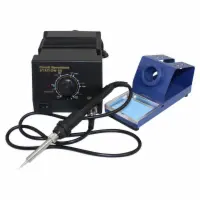
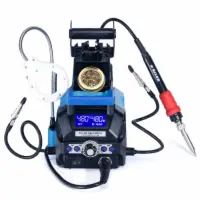
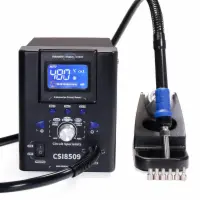
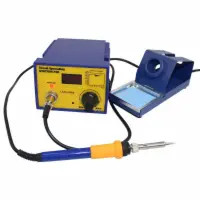

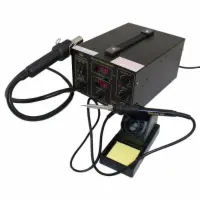
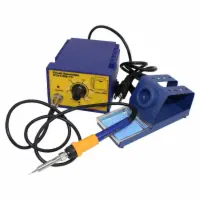
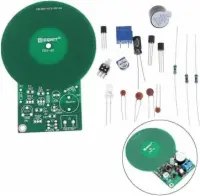
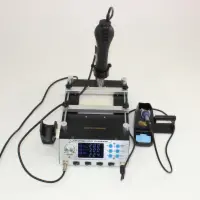
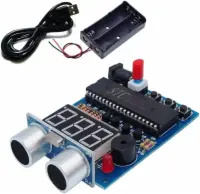

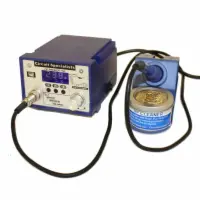
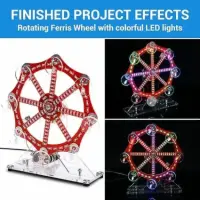
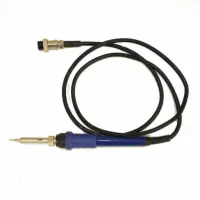

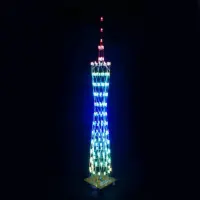
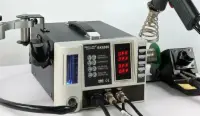
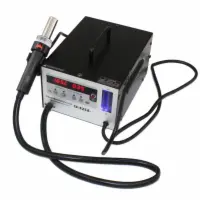
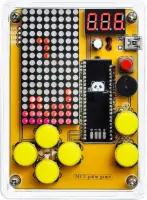
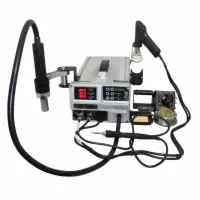
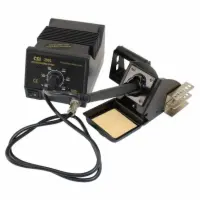

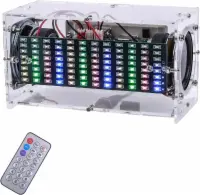
Shop for affordable soldering tools and equipment including soldering stations, soldering irons, and hot-air rework stations.
Whether you need a simple soldering iron or a powerful infrared reflow oven, Circuit Specialists has the soldering equipment you need for your next project.
Save money with our combination hot-air/soldering stations, which combine common soldering and rework tasks. We also carry soldering accessories like soldering iron tips, traditional and lead-free solder, solder flux, and replacement parts.
Just getting started? No problem! We’ve got everything you need to start soldering, from all-in-one soldering starker kits to hot rework stations.
What is Soldering?
Soldering is the process of melting a filler metal, called solder, to fuse two or more surfaces together. This joining of two metal parts often form both a mechanical and electrical bond, which is why soldering is popular in electronics.
Solderers use handheld irons, soldering stations, or hot air rework stations to reach high temperatures to sufficiently liquify solder. Solder itself can come in both lead and lead-free forms.
A few other materials, like solder flux and flux removers, are used to keep surfaces clean and improve the wettability and conductivity of the solder. Desoldering braids, hot air rework stations, or solder suckers can be used to fix or remove excess solder.
Soldering Tools & Equipment
The following soldering tools and equipment are essential components for success in most projects:
Essentials
Solder is the metal alloy or filler that melts and then solidifies to form bonds between two surfaces. Solder can be lead or lead-free and often comes in wire form, although solder paste is also popular. Lead solders have better wettability and lower melting temperatures than lead-free solders, but come with potential health risks. Most modern solders include a flux rosin core.
Soldering Irons are wand-shaped tools with heat-resistant handles and iron tips that reach temperatures high enough to melt solder. Soldering irons are usually corded (though not always) and quality irons usually come with a station that displays temperature readings, offers temperature control, and provides a variety of other features.
Soldering Guns, like soldering irons, are used during hand-soldering to melt solder. Unlike soldering irons, soldering guns are shaped and held like a pistol. Soldering guns tend to heat faster than irons and can provide better flexibility while working.
Soldering Stations are soldering irons or guns that have a station attached. The soldering station usually displays temperature and allows users to regulate and change temperatures. Soldering stations can come with other bonus features, like a desoldering gun, vacuum pick-up wand (easily picks up tiny components), and programmable settings.
Soldering Chemicals
Solder Flux is a chemical cleaning agent that removes oxides and corrosion, coats and prevents further oxidation, and improves the wetting characteristics of solder. Solder flux helps prevent tin whiskers, which can short circuit PCBs, and prevent inefficient “cold” solder joints.
Today, flux is often combined with solder itself. Solder paste is powdered solder suspended in flux, and most solder wire has a rosin flux core, but for some projects you’ll still need separate liquid flux.
Flux Removers are aerosol or liquid chemicals that remove any leftover residue from solder flux. Without flux removers, the leftover flux might corrode and eventually destroy the PCB you’ve soldered.
Desoldering Tools
Hot Air Rework Stations is a type of soldering station that offers both soldering and desoldering functionality. Hot air rework stations include heat guns or hot air wands that rely on extremely hot air to desolder or rework components on a printed circuit board (PCB). Hot Air Rework Stations might also come with a separate soldering iron, pick-up wand, and other features.
Desoldering Stations allow users to remove excess solder or fix bridge solder joints and other soldering issues. Desoldering stations have desoldering pumps, also called solder suckers, that heat to melt the solder and then suck up the liquid solder via a vacuum tube. Desoldering stations are useful for delicately fixing PCBs without damaging components.
Desoldering Wicks (also known as desoldering braids) are a type of braided copper wire material that can remove existing solder. After the solder is reheated via a soldering iron or other tool, the melted solder naturally wicks into the desoldering braid. Solder wicks are often coated in flux but usually require additional flux to complete the job.
Other Soldering Accessories
Soldering Iron Tips & Nozzles are used on soldering irons or hot air wands. Sometimes, soldering irons allow for multiple different types of tips, which you can change out at will. Other times, you’ll need a new iron tip or nozzle to replace an ineffective one. Iron tips come in different shapes and sizes, depending on the project you’re using them for.
Solder Tip Cleaners and Tip Tinners are also important for maintaining your soldering iron or soldering gun. Tip cleaners include brass sponges or copper braids, which help remove oxidation, and tip tinners, which tin the ends of soldering irons to further prevent oxidation and build-up.
Solder Fume Extractors remove toxic fumes from the air while you solder. These soldering smoke absorbers are especially important when using lead solder.
Soldering Stands protect your work surfaces, hands, and other objects from the extremely hot temperatures of soldering irons and equipment. Soldering stands securely hold your soldering irons to prevent fire and other injury; it’s also extremely convenient!
Magnifying Lamps both light and magnify your soldering projects. They are especially useful for soldering SMDs and other soldering jobs that involve tiny components and low room for error.
Circuit board or PCB holders are nifty contraptions that gently clamp onto circuit boards and hold them in place (or allow you to rotate) PCBs that you’re soldering. Be sure to get an ESD-safe holder if you plan to get this soldering accessory.
Anti-Static, ESD-Safe Precision Tweezers are useful tools for picking up or adjusting components without getting your hands near board and potentially getting burned. We mention ESD-safe tweezers because statically charged tweezers could potentially ruin your PCB.
What is Soldering Used for?
Soldering is used for a variety of applications, from repairing electronics to making jewelry to soldering pipes in plumbing. Depending on what you’re soldering, different types of solders, materials, and techniques might be used.
When soldering jewelry, for example, solderers would avoid lead solder (which can be hazardous to health) and opt for solder high in silver. The solder usually comes in thin sheets instead of soldering wires.
Those soldering for plumbing are forbidden from using lead solder because of the potential for lead poisoning. Instead, their solder of choice is lead-free and usually comes in bars (instead of solder paste or solder wire). The solder flux used for plumbing is also unique, being too corrosive (or even conductive) for most electronic soldering applications.
Soldering electronics is another popular application. Many use soldering to repair electronics or create their own circuit boards by soldering SMDs to PCBs. This type of soldering is often called through-hole soldering because the electronic components are placed through a hole in the PCB and are soldered to the board from the underside.
Solder as an artform in itself is another compelling use for soldering. Solders can even provide a framework for stained glass windows or even melt to form pictures and sculptures. You can even create model LED sculptures, such as our LED Canton Tower Model Soldering Project Kit.








